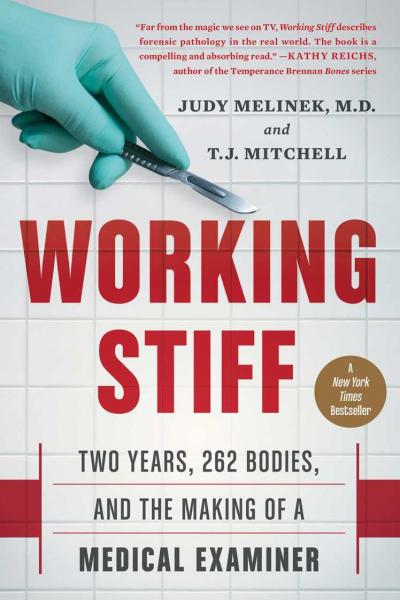
Want to get away with murder? Kill someone that New York City police and DAs do not consider important. This was only one of the more disconcerting "take-aways" I found in Judy Melinek's Working Stiff : two years, 262 bodies, and the making of a medical examiner. During a time when T.V. shows and movies have so glamorized forensic science to the point that real-life juries now have completely unrealistic demands and expectations, I urge us all to make an effort to educate ourselves to understand what medical examiners actually do and what forensic science can (and more importantly) cannot tell us about a crime. This book will make a good start.
I remember listening to this as an eAudiobook while commuting to my previous job as a medical librarian at Stanford. Melinek shows a gift for story-telling, as this book presents a series of stories about her experience in New York City's office of the Medical Examiner at the turn of the century. In pretty much the same manner as medical doctors who go on from Medical School to treat live patients, medical doctors who go into forensics also serve as interns and "residents." Starting out under close supervision but later doing more and more on her own, in case after case that Melinek describes, we see the good and the bad, and everything in between. Not every case is a gripping story of crime and clever murderers worthy of an episode of "C.S.I." In one shockingly prosaic case she discovers that a patient died because the surgeon never learned how to tie a proper knot. (Not kidding: because of having read this I seriously considered asking the surgeon who performed my heart surgery to show me how he ties a knot during our pre-op zoom meeting. But I decided that since he did this procedure over a hundred times a year and had a 1% mortality rate that he or his surgical team probably knew how to sew me back together properly).
Writing this last paragraph I really do not want to include any spoilers. Let me just say that Melinek fully understands the need for structure in narrative and has a keen grasp on what to tell the reader and most importantly when to tell the reader. The end of the book contains some of the most compelling writing of events by an active participant as I have ever read. I will leave it to you to find out for yourself, because any attempt to summarize here will ruin the experience for you.



